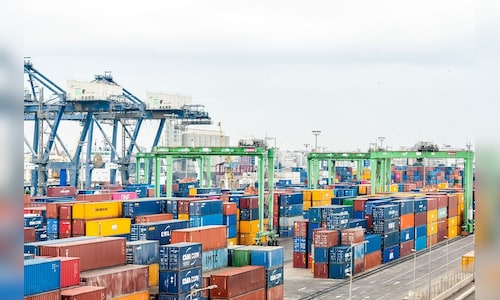In an interview with CNBC-TV18, Gerard Mestrallet, France’s special envoy for the IMEEC, highlighted that bilateral discussions have taken place between participating countries, including the European Union. He described the IMEEC as a key infrastructure initiative and a potential flagship project within the EU’s global access strategy.
“This project meets all the criteria to become a strategic project, a flagship project of the EU’s Global Access Strategic Initiative,” he said.
Despite the enthusiasm surrounding the initiative, Mestrallet acknowledged the complexity of the project.
Asked about the construction timeline, he declined to provide a precise date, saying: “There is no precise timeline for the project.” He stressed that the IMEEC represents a monumental infrastructure project designed for the 21st century.
As such, extensive pre-project studies, including feasibility and market assessments, are required and are currently underway.
A crucial aspect of the IMEEC is the connection between its endpoints: the port of Mundra in Gujarat, India, and the port of Marseille in France. Mestrallet recently visited Mundra to understand the port’s capabilities and engage with local stakeholders, including the Adani Group, which operates the facility.
Mestrallet noted that the Mundra port is not only vital because of its geographical position, but also because of its role in the Mundra Special Economic Zone, which is becoming a manufacturing hub for green energy technologies such as solar panels and wind equipment.
Below are excerpts from the interview:
Q: What is the progress of the IMEEC project?
Mestrallet: The IMEEC project aims to create an economic corridor, a connectivity link between India, the Middle East and Europe with three sections, the first section between India and the Arab continent in the southeast, which is a maritime section.
The second leg, which is by land, runs from the south-east of the Arab continent to Haifa, passing through Saudi Arabia, Jordan and Israel. The third leg, which is by sea, runs from Haifa to Europe and on to Marseille, which is the point of departure for all of Western Europe.
It is a very, very important project to increase and enhance connectivity in the transport of goods, energy, green hydrogen and also digital data through cables.
So far, we have held bilateral discussions with other countries, including the European Union. This project, which is a major project, which will be one of the most important infrastructure projects of the 21st century, meets all the criteria to become a strategic project, a flagship project for the EU’s Global Gateway Strategic Initiative.
Q: You are seeking to establish a connection between the end point of IMEEC, which is the port of Marseille, and also the port of Mundra, which is a starting point. You recently visited the port of Mundra in Gujarat. What were you trying to understand there? And what has been your message and conversation with the stakeholders there, including the Adani group, which operates the port of Mundra?
Mestrallet: The port of Mundra and Marseille in France are the two ends of the corridor. So France and India play a key role in this project, not only because they are the two ends of the project, but also because Prime Minister Modi and President Emmanuel Macron were at the origin of the project. They have held talks in New Delhi during the G20. While President Macron had been invited as a special guest for Republic Day on January 26 this year, the IMEEC was also on the agenda, and the two heads of state have been talking about the IMEEC and pushing hard for it to be achieved. So France and India are very key.
Mundra Port has a key advantage because of its size, its position, its management, and there is also the Mundra Special Economic Zone with many activities including green energy manufacturing activities, solar panels and wind equipment.
Q: When will all countries involved be able to agree and begin construction work on the IMEEC corridor?
Mestrallet: There is no precise time horizon for the project. In any case, we have to know and be aware that this is one of the world’s great infrastructures of the 21st century. Therefore, it will be the first time that it is done and it will be built for the century. A project of these characteristics requires many prior studies, pre-feasibility studies, market studies, and we are in that period.
Watch the video for more information
Disclaimer:
The information contained in this post is for general information purposes only. We make no representations or warranties of any kind, express or implied, about the completeness, accuracy, reliability, suitability or availability with respect to the website or the information, products, services, or related graphics contained on the post for any purpose.
We respect the intellectual property rights of content creators. If you are the owner of any material featured on our website and have concerns about its use, please contact us. We are committed to addressing any copyright issues promptly and will remove any material within 2 days of receiving a request from the rightful owner.

